Richard Wiseman's Blog, page 2
November 28, 2024
A world of illusion
Welcome to another Thursday post celebrating curious mind stuff. This week, we enter the world of illusion!
I have created many optical illusions over the years, and I am fortunate enough to be friends with some of the smartest and most inventive folks in the field. Olivier Redon is certainly one of those people. Working with his daughter Chloe, Olivier creates new illusions and wonderful twists to existing ideas. A generous soul, his pieces are as playful as they are fooling.
Here is his Oh La La Box, which won the Best Illusion of the Year in 2021. Simple but brilliant…..
A man after my own heart, most of Olivier’s creations are built from cardboard and paper, and show how to transform the ordinary into the extraordinary. In another instance, the dynamic duo have joined books and boxes together in impossible ways….
Our paths first crossed when I created a version of the Beuchet Chair, only to discover that Olivier had had pretty much the same idea several years ago (mine involves an addition of a fake cloth to help with the illusion of continuity)!  Olivier has also used the same idea to make objects shrink and grow in desktop version. Genius. Olivier is based in San Francisco and creates for the fun of making something new and the joy of sharing it with younger minds. Who knows, perhaps there will be a museum dedicated to his work.
Olivier has also used the same idea to make objects shrink and grow in desktop version. Genius. Olivier is based in San Francisco and creates for the fun of making something new and the joy of sharing it with younger minds. Who knows, perhaps there will be a museum dedicated to his work.
I asked Olivier three key questions about his work…
 How do you find your creative ideas?
How do you find your creative ideas?
Very interesting question. At first, I paid attention to what was around me. But then, over time, I noticed that there were no big changes in the world of optical illusions, and so I decided to do something about it and create something new myself. Now I have more than 50 optical illusions that fill 3 rooms in my house!
Who are your heroes of the world of optical illusions?
Jerry Andrus, because he invented so much, yet had no computer or printer! He just worked with metal, cardboard, or wood. I found Jerry Andrus via the internet in 2022, but I didn’t know him before that because I wanted to create my illusions without knowing about what already existed.
Should all the classrooms in the world have optical illusions?
Of course! It is so much fun to play with your brain and especially for adults, children, teachers and students.
You can find out about Olivier’s great work here and read more about it in this article.
What do you think? Leave a comment and let us know.

November 21, 2024
A magical detective story
Another Thursday, another dose of curious stuff. Here is a strange tale combining magic, a trip to Paris, and some remarkable photographs.
 In the early 1890s, French scientist Alfred Binet teamed up with several magicians (including sleight of hand expert Edouard-Joseph Raynaly) and photographer Georges Demeny to discover how magic fooled the mind. Demeny had helped to create an early type of film camera and was using it to analyse fast movements by reducing them to a series of rapidly taken still photographs. His clockwork camera could move 24 frames past a lens at the rate of one every tenth of a second. Publishing the results in an 1894 article, Binet describes how the images removed the magician’s patter and speed of movement, and so exposed the illusions. The photographs were not reproduced in Binet’s article, but it did contain a curious note explaining that they were ‘stored in laboratory records.’
In the early 1890s, French scientist Alfred Binet teamed up with several magicians (including sleight of hand expert Edouard-Joseph Raynaly) and photographer Georges Demeny to discover how magic fooled the mind. Demeny had helped to create an early type of film camera and was using it to analyse fast movements by reducing them to a series of rapidly taken still photographs. His clockwork camera could move 24 frames past a lens at the rate of one every tenth of a second. Publishing the results in an 1894 article, Binet describes how the images removed the magician’s patter and speed of movement, and so exposed the illusions. The photographs were not reproduced in Binet’s article, but it did contain a curious note explaining that they were ‘stored in laboratory records.’
 I came across Binet’s article when I was writing my PhD on magic. A few years later, I decided to search for the missing images. I first contacted an expert on early film, Professor Marta Braun (Toronto Metropolitan University). Marta wasn’t aware of the images, but suggested that I reach out to an archivist at the French National Library named Laurent Mannoni. After several weeks of discussions and searching, Laurent discovered 3 sets of Binet’s images in the archive. I headed to Paris!
I came across Binet’s article when I was writing my PhD on magic. A few years later, I decided to search for the missing images. I first contacted an expert on early film, Professor Marta Braun (Toronto Metropolitan University). Marta wasn’t aware of the images, but suggested that I reach out to an archivist at the French National Library named Laurent Mannoni. After several weeks of discussions and searching, Laurent discovered 3 sets of Binet’s images in the archive. I headed to Paris!
 Once in the archive, Laurent led me into a darkened room filled with amazing objects, including Demeny’s camera, apparatus from the famous French magician Robert-Houdin and the 3 sets of images! These images were breath-taking and involved Raynaly springing cards between his hands (11 images), changing one playing card into another (11 images) and making a ball vanish (24 images). Laurent kindly allowed me to make digital copies of the photographs. On the train back to the UK, a thought occurred to me. If I were to present each set of images in rapid succession, I could recreate Raynaly’s performance from over a century ago! So that’s what I did and here is one of the films.
Once in the archive, Laurent led me into a darkened room filled with amazing objects, including Demeny’s camera, apparatus from the famous French magician Robert-Houdin and the 3 sets of images! These images were breath-taking and involved Raynaly springing cards between his hands (11 images), changing one playing card into another (11 images) and making a ball vanish (24 images). Laurent kindly allowed me to make digital copies of the photographs. On the train back to the UK, a thought occurred to me. If I were to present each set of images in rapid succession, I could recreate Raynaly’s performance from over a century ago! So that’s what I did and here is one of the films.
The film shows Raynaly dropping the ball from one hand to another, passing back into his upper hand and then the ball vanishing. Don’t blink or you will miss it! Historians often cite 1896 footage of British magician David Devant as the earliest film of a conjurer, but Demeny’s film predates Devant’s footage by at least two years. I have shown the Raynaly film at many conferences and conventions, and he always receives a much-deserved round of applause!
So, there you have it. A magical detective story borne of curiosity and luck, that ended up uncovering the world’s earliest film of a magician. What do you think? It’s easy to imagine none of this happening. What if the article hadn’t stuck in my mind. Or Maria hadn’t been as helpful? Or Laurent hadn’t been as generous? But I am glad that it did.
Further reading:
Binet, A. (1894). Psychology of prestidigitation. Annual Report of the Board of Regents of the Smithsonian Institution (pp.555–571). Washington, DC: Government Printing Office.
Lachapelle S. (2008). From the stage to the laboratory: magicians, psychologists, and the science of illusion. Journal of the history of the behavioral sciences, 44(4), 319–334. https://doi.org/10.1002/jhbs.20327
Thomas, C., & Didierjean, A. (2016). Scientific Study of Magic: Binet’s Pioneering Approach Based on Observations and Chronophotography. The American journal of psychology, 129, 313–326. https://doi.org/10.5406/amerjpsyc.129.3.0313
All images except Binet, copyright Richard Wiseman
November 14, 2024
The genius of Teller
Welcome to another blog post and many thanks for your kind comments on my previous post. At CSICON I had the pleasure of interviewing Penn & Teller about their work. I am a huge fan and believe that they have created some of the world’s greatest magic. I have known Teller for many years, and in this post, I want to look at a great technique that he uses to generate a sense of joy.
In 59 Seconds , I wrote about the power of gratitude. As I explain in this video, we all have something positive in our lives, such as great friends, good health, a nice job or a fun hobby. As time goes on, we get used to what we have, and it slowly fades from our mind. To prevent this happening, I came up with a simple exercise based around this research. Just before you go to bed, briefly write down one thing in your life for which you have a sense of gratitude, or the best thing that’s happened to you during the last day. This technique is designed to boost wellbeing by reminding you of the good things in your life.
In one of Penn & Teller’s theater programmes, Teller described a secret ritual that he often carries out after a show. On the way back to his dressing room he allows himself to wonder whether he will leave his theater that night and not perform the show again. Not surprisingly, this thought fills him with intense sadness. Then, a few moments later he reminds himself that that moment hasn’t come, and he experiences a wonderful sense of joy. Teller invites readers to think about an aspect of their lives that they love, and to imagine that at some point in the future that part of their life no longer exists. Finally, they are asked to remind themselves that right now they can still enjoy what they have (at least for the moment!).
Teller’s technique is a wonderful way of eliciting a sense of gratitude, living in the moment, and valuing what we have. It is a version of an idea called ‘mental subtraction’, and research suggests that it is a highly effective way of boosting wellbeing. I have never seen Teller’s technique in the psychological literature, but it would make the basis of a wonderful study. Oh, here is the great man performing his iconic routine, Shadows.
And if you want to see Penn & Teller live (please do!), then check out their show and tour here.
See you next time!
November 7, 2024
How to keep to time
I am delighted to say that I am going to regularly blog about quirky things that have captured my imagination. I hope your curiosity will also be tickled! You can follow the posts here or over on Substack. To kick things off, here are some thoughts on the strange link between my life, Paul Daniels, mathematics and wrist watches.
 I became interested in magic at a young age, and when I was thirteen years old I saw master magician Paul Daniels in his summer season show at Bournemouth. It was the first time that I had seen a big magic show, and I loved it. Recently, my magic pal Paul Kieve kindly gave me a poster from the show, and it’s amazing to see that it ran six days a week throughout the entire season. Paul Daniels worked hard!
I became interested in magic at a young age, and when I was thirteen years old I saw master magician Paul Daniels in his summer season show at Bournemouth. It was the first time that I had seen a big magic show, and I loved it. Recently, my magic pal Paul Kieve kindly gave me a poster from the show, and it’s amazing to see that it ran six days a week throughout the entire season. Paul Daniels worked hard!
Anyway, I digress. In my favourite part of the show, Paul asked someone to call out any number and then placed 16 large silver numbers onto a giant board. Amazingly, the columns, rows, and diagonals on the board added up to the chosen number! Magicians refer to this as a Magic Square and that performance sparked my lifelong fascination with mathematical magic. For instance, here is a Quirkology video based on the work of mathematician Martin Gardner…
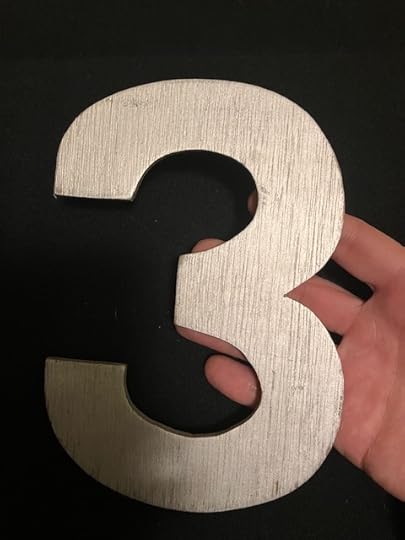
A few weeks ago, I received a mysterious package from Chris Cross. Chris buys and sells magic and has a large collection of Paul Daniels props. I had written an article on the impact that Paul and the Magic Square had had on my life, and Chris had kindly sent me one of Paul’s original numbers!
Paul’s influence on me extends beyond mathematical magic. It’s vital that any act doesn’t under- or over-run, and Paul had a reputation for always finishing on time. How did he do it? Openly looking at a watch onstage is never a good idea, and Paul’s secret was as simple as it was effective. He placed a clock inside his onstage box/table, and glanced at the clock each time he took a prop out of the box! I loved the idea and came up with my own version for talks. Whenever I speak, I wear a watch with the face on the inside of my wrist. If my slides are being projected on a screen to my right, the watch is on my right wrist and if the slides are on my left, the watch is on my left wrist. When I need to know the time, I just gesture to the slides and appear to look at them – in reality, I am secretly glancing at my watch! Every time I do it, I think of Paul!
I last met Paul and Debbie McGee when we were all performing at a convention organised by the brilliant Portuguese magician Luis de Matos. At the meeting I was delighted to unveil a new version of the Magic Square. What goes around, comes around.
If you want to see Luis’ wonderful show Impossible, it has just opened at the Folies Bergère in Paris.
October 29, 2024
A Virtual Haunting
I am a huge fan of 1930s paranormal researcher Harry Price. Price carried out lots of amazing investigations, including studying an alleged talking mongoose and trying to use an ancient spell to turn a goat into a Prince. However, he also investigated Borley Rectory in Essex, and crowned it the most haunted house in England. The Rectory was associated with lots of strange phenomena (including ghostly nuns, mysterious voices, and chilling apparitions), but burned down in 1939.
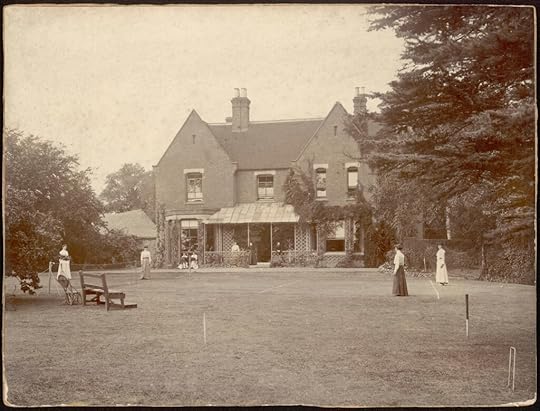 Borley Rectory at the time of Harry Bull’s occupancy : the garden front, the Bull family enjoying a game of tennis Date: circa 1892 Source: Peter Underwood collection
Borley Rectory at the time of Harry Bull’s occupancy : the garden front, the Bull family enjoying a game of tennis Date: circa 1892 Source: Peter Underwood collection
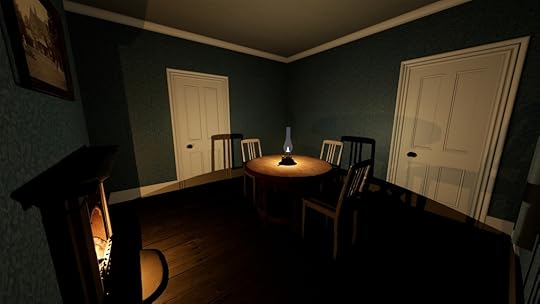
Working from original photographs, eyewitness descriptions and detailed floor plans, we have have recreated one of the most haunted rooms in the building using virtual reality. Now, people can step back in time, re-visit the Rectory, and see if they still have weird experiences in this creepy space.
The team consisted of University of Hertfordshire technician Alex Eckford, paranormal expert Paul Adams, and myself. The room (known as The Blue Room) happens to be almost identical in size to one of the labs in the Psychology Department, and so participants can fully immerse themselves in the space by touching the walls, sitting in chairs, etc.. We can also add virtual ghosts and other strange happenings! It will be fascinating to see how people respond to this space all these years later.
I am excited about the project and love the idea of bringing this special space back from the ashes. If you have any memories or information about Borley Rectory, or would like to get involved in the project, please get in contact.
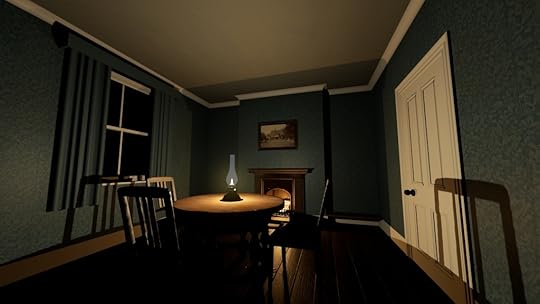
The Haunting of Borley Rectory
I am a huge fan of 1930s paranormal researcher Harry Price. Price carried out lots of amazing investigations, including studying an alleged talking mongoose and trying to use an ancient spell to turn a goat into a Prince. However, he also investigated Borley Rectory in Essex, and crowned it the most haunted house in England. The Rectory was associated with lots of strange phenomena (including ghostly nuns, mysterious voices, and chilling apparitions), but burned down in 1939.
 Borley Rectory at the time of Harry Bull’s occupancy : the garden front, the Bull family enjoying a game of tennis Date: circa 1892 Source: Peter Underwood collection
Borley Rectory at the time of Harry Bull’s occupancy : the garden front, the Bull family enjoying a game of tennis Date: circa 1892 Source: Peter Underwood collection

Working from original photographs, eyewitness descriptions and detailed floor plans, we have have recreated one of the most haunted rooms in the building using virtual reality. Now, people can step back in time, re-visit the Rectory, and see if they still have weird experiences in this creepy space.
The team consisted of University of Hertfordshire technician Alex Eckford, paranormal expert Paul Adams, and myself. The room (known as The Blue Room) happens to be almost identical in size to one of the labs in the Psychology Department, and so participants can fully immerse themselves in the space by touching the walls, sitting in chairs, etc.. We can also add virtual ghosts and other strange happenings! It will be fascinating to see how people respond to this space all these years later.
I am excited about the project and love the idea of bringing this special space back from the ashes. If you have any memories or information about Borley Rectory, or would like to get involved in the project, please get in contact.

April 29, 2024
New book and new illusion
Two quick bits of news from me.
 First, my new book on how learning magic promotes wellbeing is out very soon. It’s called Magic Your Mind Happy, and I am very excited because it provides a new perspective on magic. I will be doing lots of events to promote the book and it’s available to pre-order here.
First, my new book on how learning magic promotes wellbeing is out very soon. It’s called Magic Your Mind Happy, and I am very excited because it provides a new perspective on magic. I will be doing lots of events to promote the book and it’s available to pre-order here.
Second, I have invented a new optical illusion! Well, to be more accurate, a new variant on a known illusion. The Beuchet Chair is one of my favourite illusions and involves a person appearing to be much smaller than they are. Invented by Jean Beuchet in the 1960s, it relies upon forced perspective created by chair legs that are close to the observer, and a large chair seat further away.
 I have come up with a variant. This one centres around a plinth rather than a chair. The legs of the original chair are replaced by two pieces of hinged cardboard (these can easily be cut from foamboard and hinged with tape), and the large seat and back of the chair are replaced with a piece of cloth.
I have come up with a variant. This one centres around a plinth rather than a chair. The legs of the original chair are replaced by two pieces of hinged cardboard (these can easily be cut from foamboard and hinged with tape), and the large seat and back of the chair are replaced with a piece of cloth.
The hinged screen forms the base of the plinth and is positioned in front of the photographer, and the cloth appears to form the top of the plinth and is placed on the floor behind the screen. To help to create a sense of continuity between the large cloth and the plinth, two small pieces of matching cloth are draped along the top of the screens. The front and side panels of the screen help to conceal the front and left edge of the cloth, and make lining up the photograph much easier than in the original illusion.
 This entire set up can be constructed in a short space of time, is quick to set up, and folds flat after use. Because of this, it’s ideal for those wanting to create a convincing version of this classic illusion that is easy and cost effective to build, assemble, move, and store. I hope that you like it.
This entire set up can be constructed in a short space of time, is quick to set up, and folds flat after use. Because of this, it’s ideal for those wanting to create a convincing version of this classic illusion that is easy and cost effective to build, assemble, move, and store. I hope that you like it.
November 29, 2023
Christmas shows!
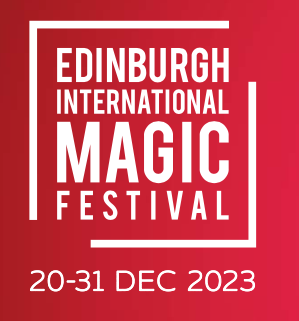
Hi there,
I am delighted to say that I am back performing at the Edinburgh Magic Festival this year.
First, on the 28th December I will be exploring the strange world of illusion, mystery and magic in a show called MIND MAGIC. This will involve showing some of the best optical illusions in the world, revealing whether paranormal phenomena really exist, showing how we can all achieve the impossible, explaining how to transform a tea towel into a chicken, and much more. All the info is here.
Then, on the 28th and 29th December, I am presenting a new and experimental show about the invention of magic. This will be an intimate affair for a small number of people. It will examine how magicians create magic, and explore the mind and work of a magical genius who created the world’s greatest card trick. Info here.
So, if you are around, please come along, and fun will be had!
October 11, 2023
New in 2024
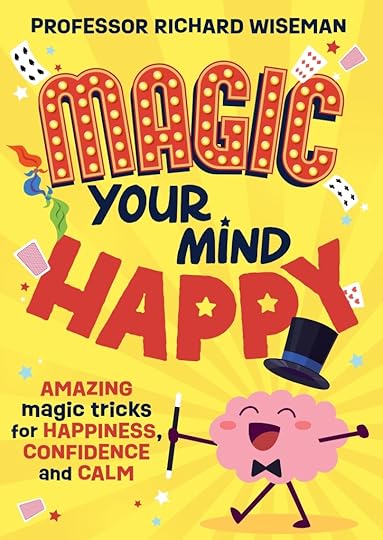
Some exciting news from me! I have just written my first book for children.
It uses magic to teach youngsters a range of essential life skills, including social skills, confidence, creativity, lateral thinking and much much more. Readers will learn how to perform lots of seemingly impossible feats, including how to defy gravity, read minds, pluck coins from thin air, and predict the future. Most important of all, these tricks have been carefully chosen to help boost mental wellbeing and resilience. It’s fun, it’s easy, it’s magic!
I am delighted to say that Magic Your Mind Happy will be published by Wren and Rook in May 2024, and is available to preorder now here.
August 30, 2023
Award and new book

Two quick bits of news.
First, The Royal Society have kindly given me the prestigious David Attenborough Award. This is a lifetime achievement award for my work promoting psychology and critical thinking, and focuses on my research combatting pseudo-science and examining the psychology of magic. Previous recipients include Professor Sir Jonathan Van-Tam and Professor Alice Roberts, and I will give an award lecture about my work in August 2024.
Second, I have a new academic magic book out! It is part of the well-known Arts For Health series and reviews work examining how watching and learning magic is good for your wellbeing, including how it boosts confidence, social skills, dexterity, curiosity and much more. It was lots of fun to write and also includes interviews key practitioners, including Richard McDougall (Breathe Magic), Julie Eng (Magicana), Mario the Maker Magician (USA), David Brookhouse (UK), David Gore and Marian Williamson (College of Magic), and Tom Verner (Magicians Without Borders). More details here.
Richard Wiseman's Blog
- Richard Wiseman's profile
- 584 followers



